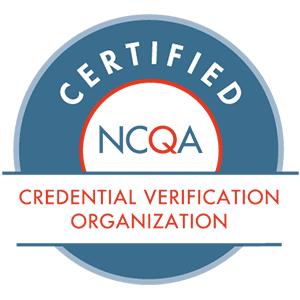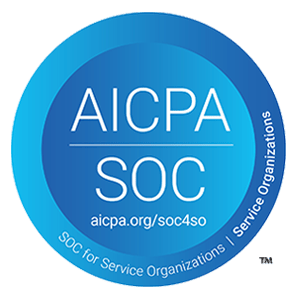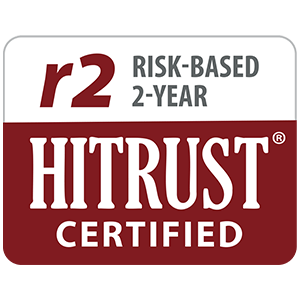When a healthcare provider or organization bills a payer for services rendered, payers need up-to-date credentialing data to ensure these providers are properly licensed to give expert clinical services. After all, having the necessary credentials and licenses ensures provider network integrity and compliance, all while helping members receive safe, equitable, high-quality care.
However, credentialing teams must take it upon themselves to ensure that the providers seeking compensation for their services have been thoroughly vetted against federal and state exclusion sources and primary sources verified (PSV). This can be accomplished through a credential verification organization (CVO), an internal system with or without a manual verification process, or a hybrid approach with an automated compliance monitoring and verification platform like ProviderTrust.
Regardless of your approach, the credentialing process can be quite complex. As such, many CVOs and/or internal systems are not without their own pitfalls, often leaving gaps that create inaccuracies in provider data, delaying the verification process, creating duplicative work, and leaving payers open to costly missteps or compliance issues. There is certainly an opportunity for more efficiency and data accuracy in the credentialing and monitoring process. It starts with education about the regulatory and financial risks that data gaps and inefficient workflows cause.
In this post, we’ll explore current challenges for credentialing teams and provide best practices to increase efficiency and protect time and revenue.
Challenge 1: The credential verification process is intricate, and resources are limited
Confirming a provider has the proper credentials for their particular job involves background checks, reference checks, and database searches. In addition, organizations should monitor reports about medical incidents, disciplinary action, and malpractice claims involving their providers. Verifying a provider’s education, qualifications, and experience ensures that healthcare organizations remain compliant with regulatory requirements set out by the Department of Health and Human Services (HHS), the Office of Inspector General (OIG), and other ruling entities.
The process, while necessary, is overwhelming and increasingly complex. And with the proliferation of digital health and the potential for interstate licensure issues in a post-pandemic regulatory environment, it’s not getting any easier. If bad actors are hiding in participating and/or non-participating networks, false claims and members’ quality and safety are at risk.
Challenge 2: The credential verification process is timely
And traditional CVOs and internal processes can often slow down the process. Each verification comes with a time limit – the verification may not be older than 120 calendar days when it is reported to healthcare organizations by CVOs. Sometimes it may take a traditional CVO up to the full 120-day timeframe to complete all requirements within a credential verification application, yielding all results at one time through an antiquated file transfer.
For most payer organizations, a lengthy credentialing process at hire is typically followed by a lengthy recredentialing process three years later, often opening risky data and exclusion monitoring gaps that delay time-to-revenue and organizational growth goals. Not all CVOs automate continuous exclusion and license monitoring, and it’s impossible for internal credentialing teams to accurately and effectively keep pace with the sheer number of primary sources. Additionally, disparate primary source data can be outdated and/or incomplete and often disconnected across state lines. Without intelligent, ongoing monitoring of provider networks, payers are exposed to potential false claims from unlicensed or excluded providers, putting participation with Medicare and Medicaid at risk and ultimately allowing fraudulent behavior to impact member care.
Challenge 3: Not all credential verification solutions are created equal
When evaluating the most efficient and cost-effective approach to credential verification, there are several things to consider:
- Is the credential verification process built to keep pace with regulatory changes?
- How do a solution’s data accuracy standards support risk mitigation?
- Does a credential verification solution’s pace and/or hurdle impact provider relationships?
Look no further than accrediting bodies like The Joint Commission and the National Committee for Quality Assurance (NCQA) for an impartial review of best practices and regulatory adherence. And if you choose to work with a third-party CVO, accreditation is critical– there’s no substitute for clear and concise performance, security, and accuracy standards.
Another way to stay up-to-date with current standards and regulations is to conduct regular audits and evaluations of provider credentials. This can help to identify any gaps or areas of concern. Payer organizations should also communicate clearly and transparently with their providers about the credentialing process. Providers should be informed about the steps that need to be taken and the time frame for completion. At the same time, healthcare organizations should be transparent about their requirements and expectations. This ensures providers understand what is expected of them and thus plan accordingly.
No substitutions for workflow efficiency and data accuracy
Efficient and accurate provider credentialing is ultimately a critical process for payer organizations. When credentialing teams have an efficient and foolproof credentialing strategy and process, it ensures provider network integrity, protects revenue, and contributes to more equitable and safe healthcare for members. By adhering to best practices in healthcare provider credentialing — such as leveraging automation and always-accurate, continuous monitoring technology for simplified credentialing/recredentialing workflows, working with accrediting bodies, and promoting clear communication and transparency — payer organizations minimize risk for all parties involved. Proper and regular provider verification and monitoring:
- Mitigates false claims and other downstream risks while protecting revenue
- Ensures compliance with regulatory standards and requirements
- Ensures payers maintain a positive reputation with both healthcare providers and members
- Prevents medical errors and adverse events







